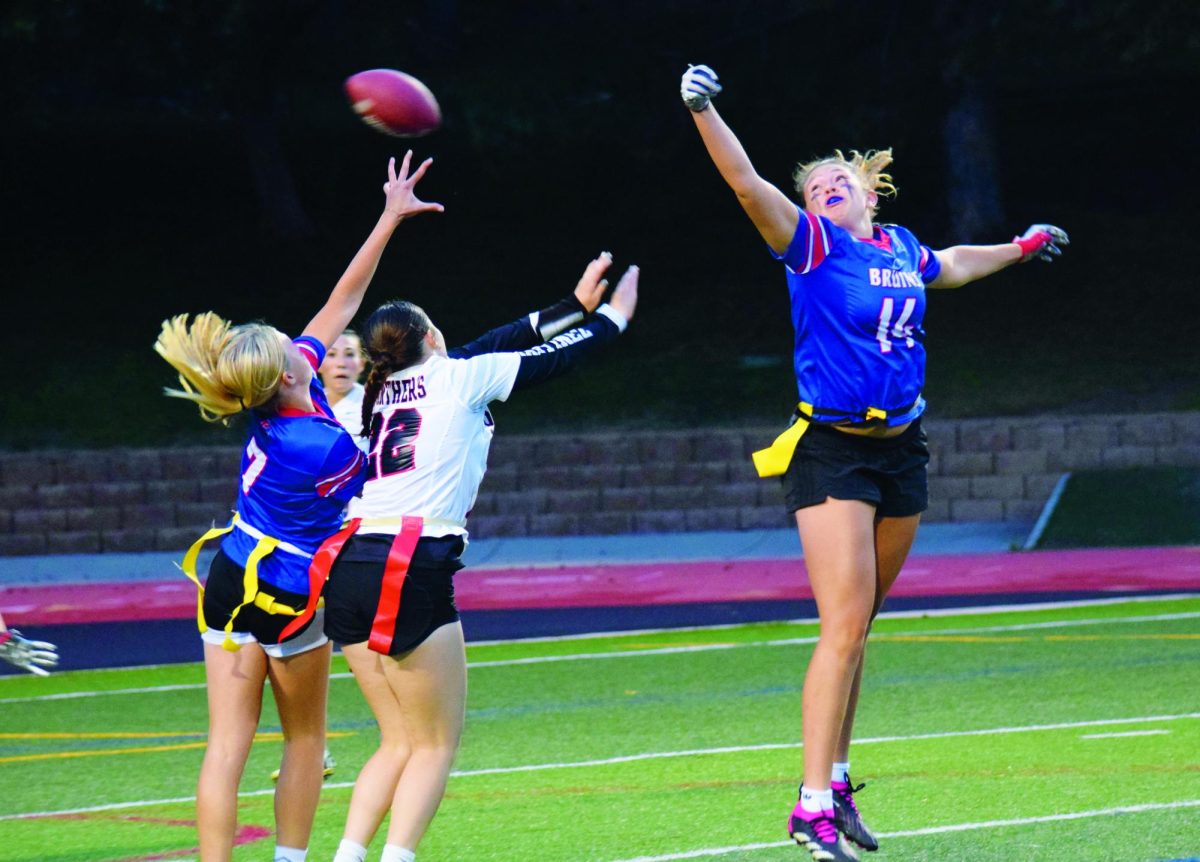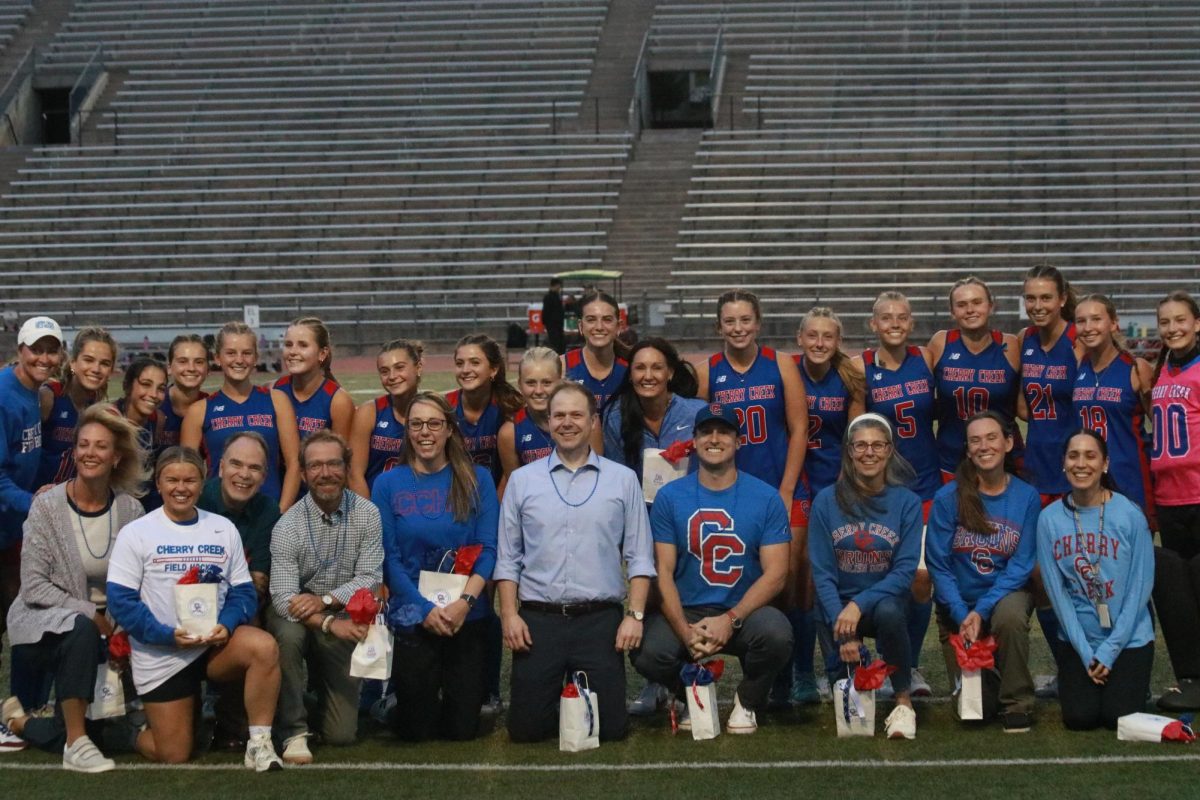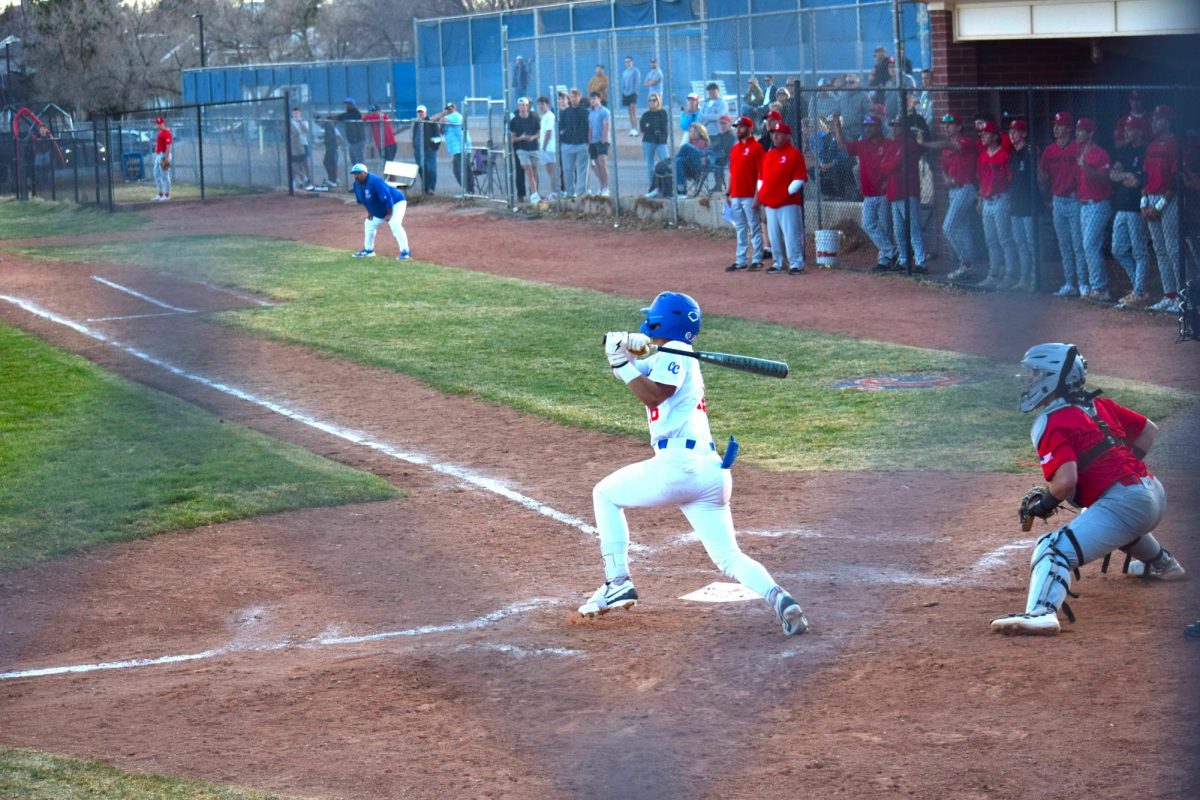It’s now official. Girls’ flag football is now a part of the Colorado High School Activities Association’s group of certified sanctioned sports.
Girls’ flag football will become the 33rd sport sanctioned by CHSAA, and be the 18th sanctioned sport for girls in Colorado, compared to the 27 boys’ sports sponsored by CHSAA.
Through their approval from CHSAA, the team feels appreciated and as though they are a part of something bigger. This growth in acceptance of girls’ flag football has left the team feeling like their sport matters.
It just feels more serious. It feels more real,” assistant coach Jonathan Johnson said.
CHSAA’s acknowledgment has encouraged the team members to take the sport more serious and the team feels more connected than ever before. Because the players know that there’s a real appreciation for their sport, it’s more exciting to play.
It’s making the girls feel like they’re in a real sport, which they are, but now it’s a ‘for real’,” Johnson said.
The players on the team also believe the sanctioning will create a bigger community around the sport and drive more engagement.
“More media will eventually come, and more people will be attracted to the sport, which gives more opportunities [to us],” senior wide receiver Molly Dorighi (#6) said.
Beyond the high school level, flag football has also been chosen to be a part of the 2028 Los Angeles Olympics, which players on the team hope will help future engagement and support, compared to more a ‘covered’ sports.
“Because flag football is going to be an Olympic sport, and the next Olympics are in the United States, that’s definitely drawing a lot of attention, because before that, there was no club flag football,” Dorighi said.
As the players adjust to the new CHSAA rules and the upcoming attention, the members on the team also wish for more school support and media coverage from Creek.
“It just doesn’t get the [same] all-around excitement as normal football,” sophomore blocker Tallis Pilkington (#3) said. “But in the future, I do think the attitude will change.”
The girls on the team enjoy the new rules and regulations, but they also wish for more support when it comes to the student sections.
“But with most things at Creek, the involvement from the student population is limited,” Dorighi said.
Tackle football, which is more commonly played by men and is arguably the most known type of football, leads to more people knowing the rules, compared to women’s flag where the rules are different and aren’t as familiar. In girls’ flag, there is less direct contact compared to tackle football. The flags around the waist are used as a tackling method; after the flag is pulled, the ball is marked dead and the person is marked down.
“People confuse the rules of tackle football and girls flag football all the time at games,” Pilkington said.
Because of the recent CHSAA sanctioning, changes in game play around things like blocking and the length of the playing field have also led to the development of the sport. Many players feel like these new changes only improve the game’s visibility.
“This year we are playing the full field, whereas last year we didn’t. The new rules do make it feel more like tackle football, which is intriguing,” Dorighi said.
Not only do players get to experience home games, they get to enjoy more standardized equipment and game style that will provide some similarities to tackle football.
“We got used to not blocking. Now we have blocking. The equipment is more standardized. Every girl has to use the same belt flag, so it’s all three flags instead of the pop flags. Pop flags are exactly like the name, they pop off when you pull on them. They’re connected to the belt,” Johnson said.
As the sport itself begins to grow alongside the support from Creek and CHSAA, students have begun to make the team feel more appreciated.
“It’s a chance for the girls to feel like it’s more real. Now, with it being CHSAA, it feels more official,” Johnson said.









